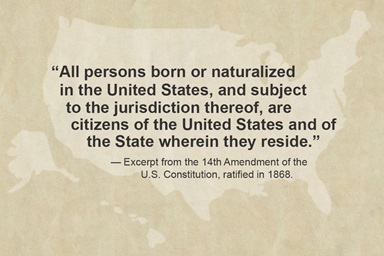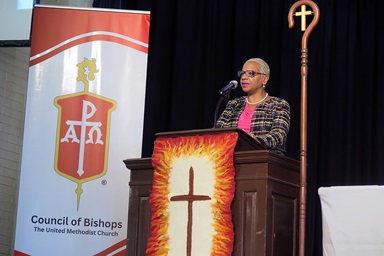More than 225 United Methodist clergy and laity as of March 21 have signed an open letter announcing their support for proposals to merge nine general agencies, nurture young leaders and empower bishops.
"We do not believe organizational change alone can ignite a renewed United Methodism," says the letter addressed to the 988 General Conference delegates. "But we do think this kind of change can focus our national leadership, both our agencies and the Council of Bishops, on the task of revitalizing the 85 percent of our churches that were found to be less than highly vital in the Call to Action studies."
The 2012 General Conference, the global denomination's top legislative assembly, will take up the proposals when it meets April 24-May 4 in Tampa, Fla.
The Rev. Adam Hamilton, senior pastor of the United Methodist Church of the Resurrection in Leawood, Kan., wrote the letter posted on March 20 after discussions with other pastors of the 100 largest United Methodist congregations in the United States. Pastors of 84 of the largest churches have signed the letter, Hamilton said. The Church of the Resurrection, with more than 8,000 in weekly attendance, is one of the denomination's two largest U.S. congregations.
Hamilton is also one of the members of the Call to Action Interim Operations Team that devised the initial proposals to restructure the denomination's agencies and redistribute up to $60 million in general church funds. The legislation designates the money for three efforts: providing more theological education outside the United States, developing more young church leaders and fostering more vital congregations.
"I think there will be lots of perfecting of the proposals," Hamilton said. "What I am concerned about is that it is our nature to resist change. We resist change by calling the changes proposed too corporate or by throwing out things that create fear."
The Connectional Table, which coordinates the denomination's mission, ministry and resources, refined the Interim Operations Team plan and drafted the legislation for General Conference. The open letter specifically endorses "the legislation being proposed by the Connectional Table related to the Call to Action."
'Gone are the days of silos'
The current structure of general church operations, with 13 separate agencies, is based on a corporate model from the 1960s and '70s, Hamilton said.
"It's sort of like General Motors with multiple divisions, each competing with the other divisions," he said. The large-church pastors have said, 'If we try to run our local church the way our denomination is run organizationally, we would get nothing done.'"
Under the Connectional Table legislation, he said, agencies would be part of one team and function more like a local church.
The legislation would consolidate nine agencies into a new Center for Connectional Mission and Ministry under a 15-member board, chaired by a layperson. A proposed 45-member General Council for Strategy and Oversight, chaired by a bishop, would have authority to hire and fire the center's future board members. The new general council would replace the Connectional Table.
Essentially, the proposal would reduce boards now governed by more than 500 people to a governance of 60.
The denomination's ethnic caucuses and other individuals have raised concerns that the new structure would marginalize the voices of people of color and laity in general church decisions.
"Gone are the days of silos, separate organizations, redundancy and inefficiencies. And while the conversation about what constitutes appropriate representation is important, the days of bloated boards and millions of our missions dollars spent on biannual meetings cannot continue," the letter says. "We must have our general agencies working together as one, on common and shared objectives, laser focused on helping the church to turn from death to life."
Pamela Crosby, executive director of Black Methodists for Church Renewal - one of the caucuses that has raised the concern about representation - said her group shares with letter signers the belief that the current organization is not sacred.
"We agree that this is the time for collaboration and teamwork," she said. "We agree that the (Connectional Table) and IOT have done good work. But we are emphatic that reaching today's goals and today's financial challenges must not be accomplished by sacrificing the ministries, staff and resources for churches and communities of color."
Resources on restructuring proposals
- Call to Action background
- Call to Action legislation
- Apex operational assessment
- Call to Action prayer guide
- The 2012 General Conference website
Previous United Methodist News Service stories
RaúlAlegría, president of the denomination's Hispanic caucus Metodistas Asociados Representando la Causa de los Hispano-Americanos, echoed Crosby's concern. He said the letter does not reflect "the reality of ministry in the communities where persons live on the economic margin of society or shadows of legal status.
"The leadership of the general agencies in partnership with annual conferences and local churches in the U.S. has made a difference," he said. "Could more be done? Absolutely but always with the understanding that all of local churches work in a covenant connection to combine resources to make diverse ministries possible."
The Rev. Mike Slaughter, senior pastor of Ginghamsburg Church, a United Methodist congregation in Tipp City, Ohio, is one of the signers of the letter. Like Crosby and other ethnic caucus leaders, he wants the church to hold itself accountable for a lack of diversity in the United States.
However, he said in his blog that: "First, the funds that support top-heavy administrative functions must be reallocated to provide strategic resources for ministry and mission at the local church level, where we are best positioned to serve the least and the lost."
In the 2008 economic downturn, his congregation had to eliminate 12 staff positions, he told UMNS. "By doing that, we did not lose money for mission," he said. "I think the local church is a microcosm of the larger church. How can we be more nimble and efficient with resources?"
Over the decades, the downturn in U.S. membership and declining revenue already have forced general agencies to eliminate some staff positions and programs. The number of staff positions in 13 general agencies has decreased from 3,139 in 1971 to 1,384 in 2010.
Addressing other concerns
Board members of the General Council on Finance and Administration, the denomination's finance agencies, also have warned that the proposed center - by merging programming and financial functions - would put more denominational assets at risk in the event of a lawsuit.
As a pastor and not a lawyer, Hamilton said he does not know how to evaluate that concern. And, the letter does not mention the concern.
However, the letter does speak to fears some church leaders have that the proposed restructuring will put too much control in the hands of the Council of Bishops. Under the legislation, the 15-member center board would make decisions in consultation with the Council of Bishops.
The Interim Operations Team also endorsed an amendment to the denomination's constitution that would allow the Council of Bishops to elect one of its number to serve as full-time president without the usual responsibilities of overseeing a geographic area. The letter says the signers fear bishops don't have enough authority in the current structure.
"Our bishops, over the last forty years, have not exercised enough leadership and this is part of the reason we are where we are today," the letter said. "Bishops cannot be tyrants, but they must be spiritual leaders who hold us accountable and help our annual conferences to work towards greater vitality. We need them to lead.And we need the Council of Bishops to effectively collaborate and work together if we will have a future with hope."
Hamilton said the proposal he cares most about is the redistribution of the $60 million to in part "raise up a new generation of young leaders for our churches."
"If we fail to do that, we have failed the church," he said.
He expects conversation at General Conference to be prayerful and intense. But he finds alternatives such as the recently announced "UMC Plan B" do not do enough to get agencies working together as one team.
"Part of what I'm counting on is the Holy Spirit guiding us, and it may be some of these proposals are not the best proposals," Hamilton said. "I think they make a lot of sense, and I think they will move us forward."
*Hahn is a multimedia news reporter for United Methodist News Service.
News media contact: Heather Hahn, Nashville, Tenn., (615) 742-5470 or newsdesk@umcom.org.
Like what you're reading? Support the ministry of UM News! Your support ensures the latest denominational news, dynamic stories and informative articles will continue to connect our global community. Make a tax-deductible donation at ResourceUMC.org/GiveUMCom.




